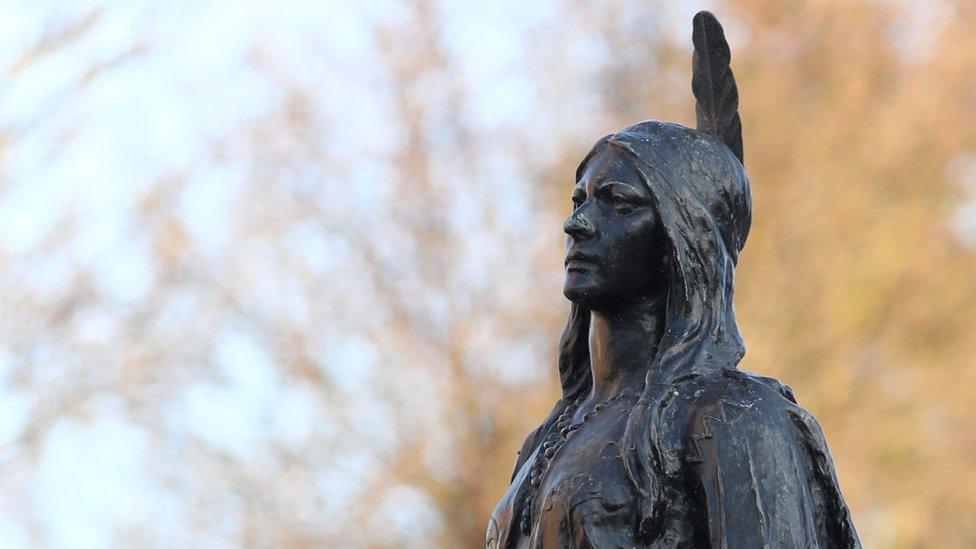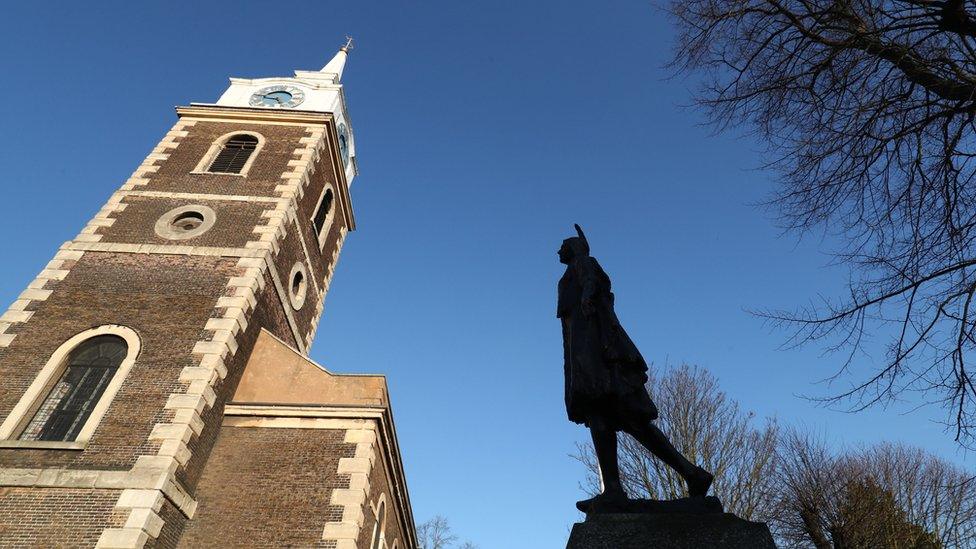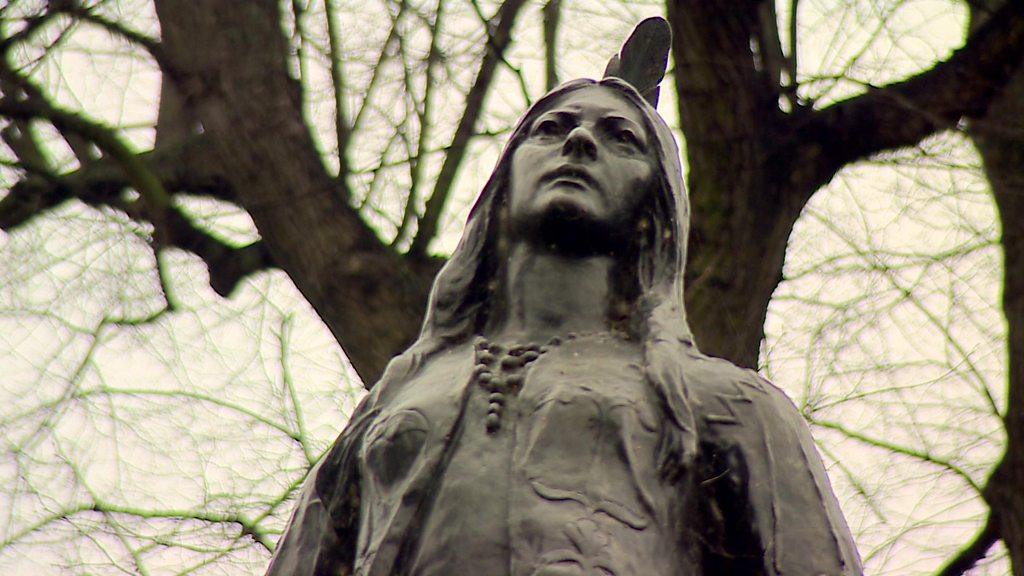Pocahontas statue 'relisted' to mark 400 years since death
- Published

The life-size bronze effigy of the Native American stands in Gravesend, Kent
A statue of Pocahontas has had its protected status "relisted" to mark 400 years since her death in England.
The life-size bronze effigy of the Native American stands in Gravesend, Kent, where she died on her journey home to Virginia in 1617.
Historic England has renewed its Grade II listed status and updated details of her life and role in Transatlantic history in its heritage list.
A new Grade II listed status has also been given to a monument in London.

Pocahontas converted to Christianity and married the colonist John Rolfe
The Virginia Quay First Settlers Monument, across the River Thames from the O2 arena in Blackwall, remembers the men, women and children who left the quayside for North America in December 1606.
The adventurers founded Jamestown, the first English colony in Virginia, in April 1607, which was captained by John Smith.

Pocahontas: a fact file
Pocahontas was the daughter of Chief Powhatan, the leader of a tribe of Native Americans
Legend has it that after Captain Smith was captured by the tribe she negotiated his release, earning a reputation as a peacemaker
After Smith returned to England, she was captured and spent a year in the English encampment
There she converted to Christianity and married the colonist John Rolfe, adopting the name Rebecca Rolfe
She travelled more than 3,000 miles with her husband to England in 1616
During her time in England she was received by the court of King James I
She died in March 1617 at the beginning of the return leg to Virginia
Pocahontas was buried in the chancel of St George's Church, Gravesend, on 21 March 1617
Her remains are thought to be beneath the existing church, after the original was destroyed by fire in 1727

The statue of Pocahontas is a copy of a sculpture in Jamestown, Virginia, that was donated to the UK in 1958 by the state's then governor.
It was first listed in 1975.

Pocahontas is believed to be buried under St George's Church
Debbie Mays, head of listing at Historic England, said: "Pocahontas is remembered for her forging of ties between two very different cultures.
"These monuments are physical reminders of her story, those of the English setting sail to the New World, and our shared colonial past and we are pleased to mark their importance on the National Heritage List for England, external."
- Published13 January 2017
